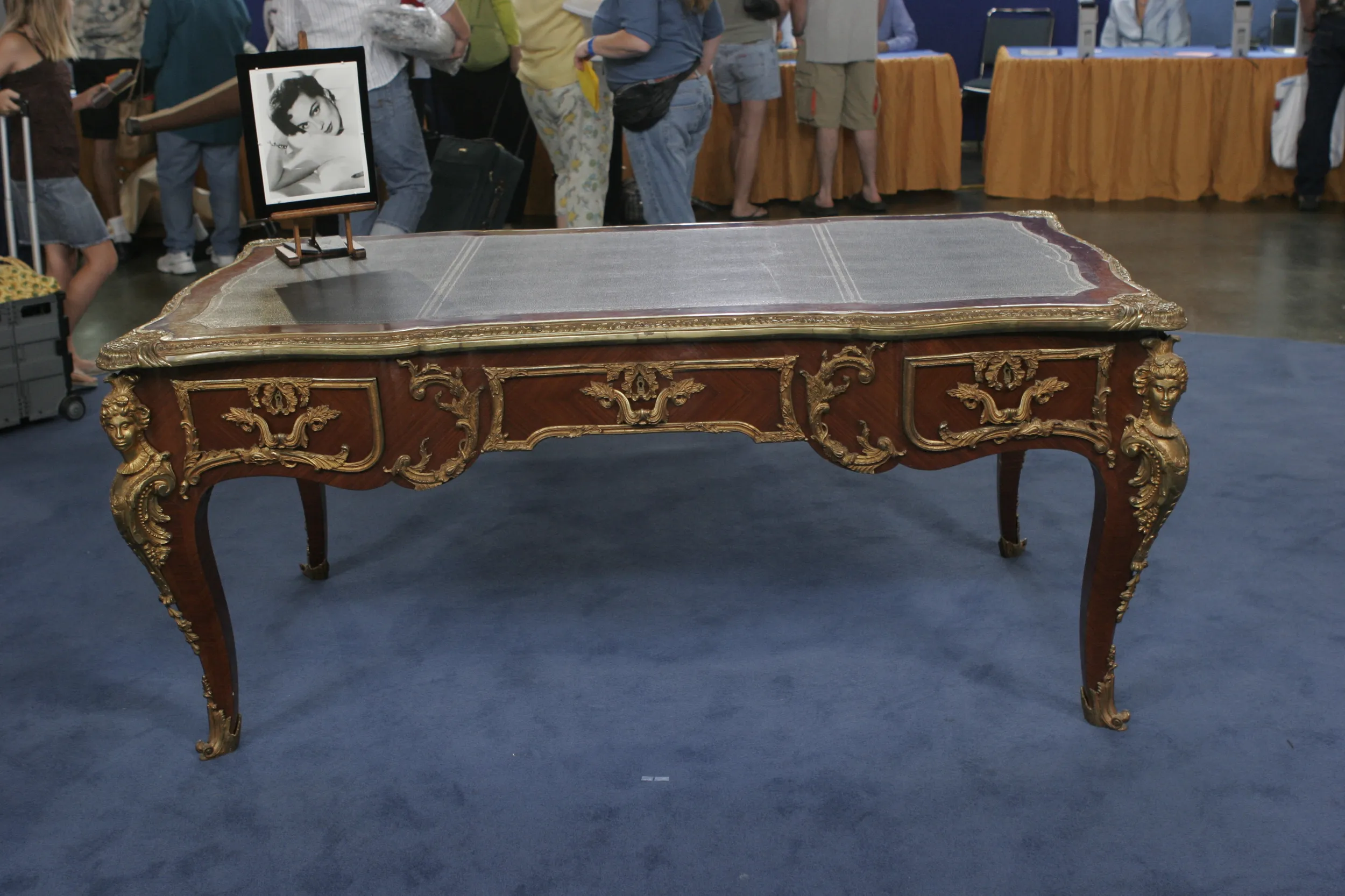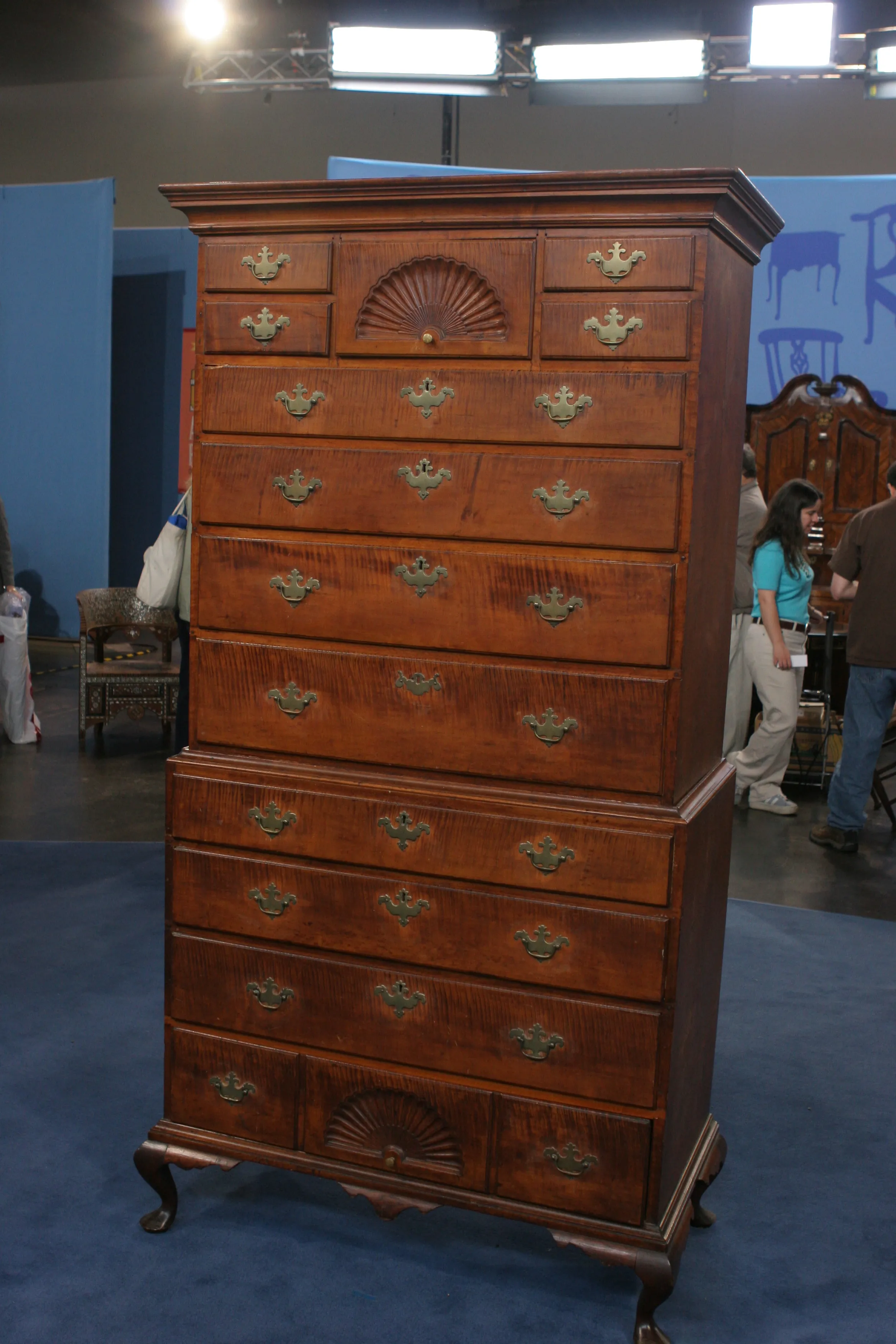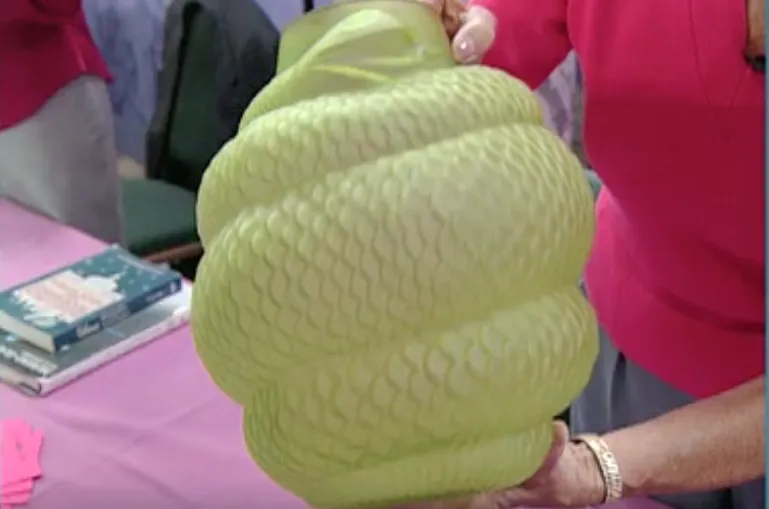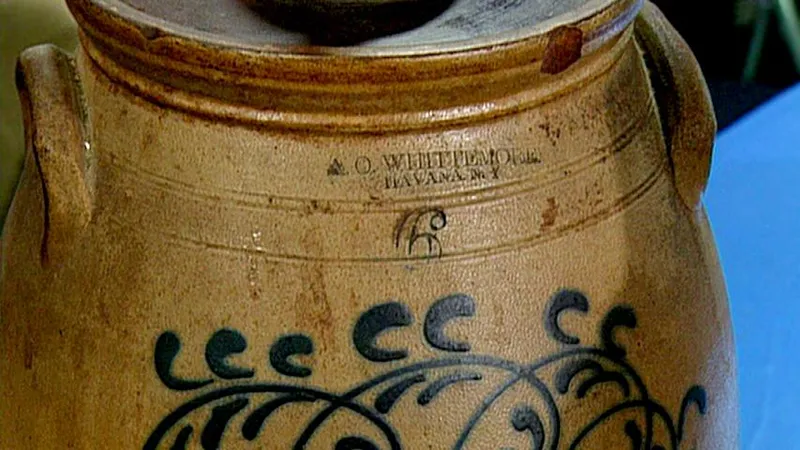GUEST: My grandfather gave them to me about 20 years ago. He had had them in his family a long time. His parents bought them. I remember them being in my grandparents' house when I was growing up, and now they're in my house.
APPRAISER: And you know that they're Tiffany.
GUEST: Yes, I was always told they were Tiffany.
APPRAISER: What we have here today are two vases that represent the beginning and the end.
GUEST: Okay.
APPRAISER: The beginning of Tiffany glassmaking, and the end of Tiffany glassmaking.
GUEST: Okay.
APPRAISER: Tiffany opened his furnaces for glass blowing in 1893. Almost six months into that there was a terrible fire in October of 1893, destroying the factory.
GUEST: Oh, wow.
APPRAISER: But he was able to rebuild it in six months, and they were going full steam ahead in 1894. This piece dates probably from 1895.
GUEST: Really?
APPRAISER: And this piece dates from the 1920s, when they were moving towards closing down. And it's a more commercial piece.
GUEST: Okay.
APPRAISER: And what's interesting about both of these pieces is that they both have something wrong with them.
GUEST: Okay.
APPRAISER: Now, this piece, the way it's signed on the bottom, it has a number without a prefix letter and without a suffix letter. That's okay, because that just indicates that this was probably made around 1895. Below that, though, is the signature, which says, "L.C. Tiffany Favrile." And if you look really closely, part of that signature is an original signature. The other part is not. It's the "LCT" that's original. So someone decided they had to gild the lily on this.
GUEST: Oh.
APPRAISER: Now, what is wrong with this? Someone cleaned it way too much.
GUEST: Okay.
APPRAISER: You didn't do that?
GUEST: No, I did not.
APPRAISER: This is the way you got it.
GUEST: Yes.
APPRAISER: Okay.
GUEST: I always wondered what this engraving was.
APPRAISER: Well, that's an original monogram, so this was made for whomever bought it. But the color on this, we're down to the copper that you can see through here.
GUEST: Okay.
APPRAISER: And then also it's still a little gold through here. But I believe that the original color was more of the brown or a statuary bronze color. So that does affect the value. But the good news is, it didn't affect the value on this. I don't like to make a big deal about signatures, because when I look at the piece I always say the piece is the signature. But after I've done that, I always turn the piece over to look. I would put a retail price of $3,000 to $4,000 on it. And then this one, were it in good shape, I would have said maybe $1,500-$2,000. But because of the condition, I would say more $500-$800.











